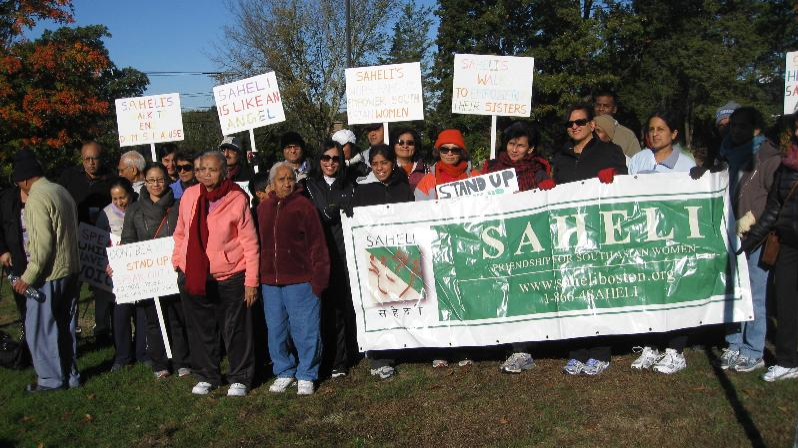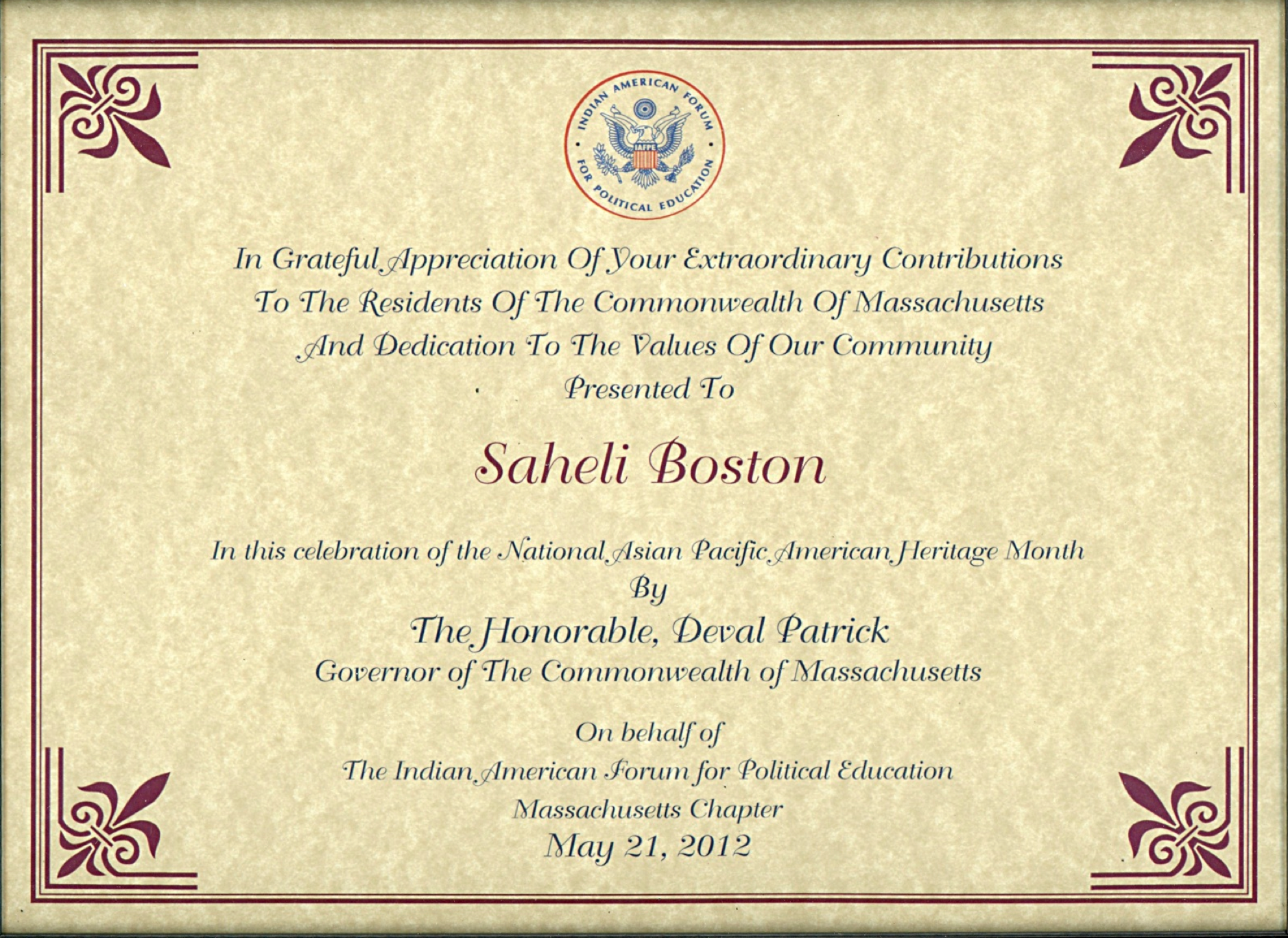By Aparna Chellappan, Saheli Volunteer
“About once every five minutes an incident of domestic violence is reported in India, under its legal definition of “cruelty by husband or his relatives”.
In 2008, as a law student in Bangalore, India, I volunteered as a researcher for a professor from London School of Economics on her book analyzing the perceptions and realities of processing cases in Indian courts. This work examined mediation in domestic violence and divorce cases.
The system of justice administration in India had come under great stress due to huge pendency of cases in courts. The number of cases filed in the courts increased tremendously in recent years resulting in undue delays and the need for alternative dispute resolution methods. The courts adopted mediation as one of the forms of dispute resolution for speedy disposal of cases. Mediation is a process of negotiation where a neutral third party assists the parties in resolving their issues/differences/disputes. Mediators use special negotiation and communication techniques to help the parties come to a settlement. In 2000, American trainers from the Institute for the Study and Development of Legal Systems (ISDLS) conducted an elaborate training for mediators in Ahmedabad. The Mediation and Conciliation Project Committee (MCPC) was constituted in 2005. By 2007, lawyers from metro cities were trained to be mediators.
We were six interns and each of us were assigned to meet and interview plaintiffs, defendants, their respective lawyers, judges, families, and the mediators in-charge of the matter. Venturing into a new internship made me nervous and thus before going for the scheduled interview, I asked myself some basic questions on the nature of abuse, why abuse took place, and who was abused? In India, I grew up seeing my house-help coming to work with bruises. She always justified the beating and said it was not a big deal. Thus, I listed my assumptions:
- Domestic violence is not an issue in my community.
- Domestic violence only happens to poor, uneducated women.
- It happens mostly in rural areas.
- It is all right if a man hit a women or child because they deserve it.
- Alcohol, drug abuse, stress and mental instability cause domestic violence.
- Domestic violence is a personal problem between a husband and a wife.
During an interview, I met Geetha (name kept confidential) at the mediation center, a beautiful, well-dressed, educated woman clad in a simple cotton saree. We chatted for a few minutes about movies, weather, and our love for books. She asked me if we could begin the interview. When she told me she was the “victim”, I was taken aback; I assumed that she was a lawyer for either the respondent or plaintiff. Her response falsified my assumptions on domestic violence instantly.
Geetha’s abuse began within months of marriage. Her husband insulted her in front of friends, and called her names during arguments. She thought the behavior was natural because as a young girl she remembered her father coming home drunk and abusing her mother at times. When she was pregnant with her first child, she quit her job due to health issues. She hoped against all hopes that the pregnancy might stop the abuse, but sadly, it did not.
Finally, one day she mustered the courage to seek help from her mother, but the response from her mother was shocking. Her mother coldly reprimanded her saying, “How can you say such things about your husband? You need to bear all this and live with it. Do whatever it takes to make this marriage work”. Geetha’s abuse escalated over the years and it was the fear of social stigma that made her stay married to the abuser. After putting up with seven years of abuse, one morning during breakfast, her husband threw hot coffee on her, which resulted in burns on her arm. After this incident, with help from her friends, she left her husband taking with her their six-year-old son.
Geetha’s custody battle over her son left too many emotional scars and she obliged to mediation in order to have a speedy solution to her pending marital issues. Geetha’s experience with mediation was not effective. She recounted that the mediator told her that she could adjust with her husband and that she should give-up her ego. Even her lawyer who was present at the divorce hearing and custody matter advised her to rethink her decision and go back to her husband.
Population-based studies from Canada, Chile, Egypt and Nicaragua have found that 6–15% of women have been physically or sexually abused during pregnancy, usually by their partners.The notion of domestic violence is deeply rooted in patriarchy and women are often considered inferior to men and thus the abuse of women is widely ignored/tolerated and the beating, often justified. According to the last exhaustive family survey done by the Indian government, (source: DHS Programme) more than 54% of men and 51% of women said it was okay for a man to beat his wife if she disrespected her in-laws, neglected children, went out without her family’s permission or even over something as trivial as putting less – or more – salt in the food. Some lawyers I spoke to said the following: ‘the husband beats his wife, but he also loves her.’, ‘why should women provoke the husband/men and hence he is justified in hitting her.’ Even the court-appointed mediators often told women that a little compromise/adjustment is good. Women are told to learn a little adjustment, compromise, and ignore the abuse.
India’s National Crime Records Bureau shows that in 2003, 50,703 cases were reported and the number of cases reported has increased to 118,866 in 2013. This rise does not necessarily mean that there is more violence now: violence has always been there, but now there is more reporting of violence. For every woman who stands up for herself, there is at least one woman who suffers in silence. With education, employment and urbanization, a large number of women are coming out to seek help and even NGOs, police, governments, women and child welfare departments and media have started showing extensive awareness campaigns in the city and rural areas.
Organizations like Saheli are instrumental in creating awareness, providing safe, healthy life to South Asian families in the United States by focusing on issues related to violence, discrimination, health and intergenerational conflict in joint households. The organization achieves these objectives by conducting workshops, trainings and social media awareness and of course having board, staff, and volunteers who are dedicated to stand up for the cause.
My experience with the legal system and the mediation proceedings in India was a revelation on how society perceives violence and created in me a firm resolution to stand against all forms of abuse and domestic violence. Abuse simply should not be tolerated. Are you willing to stand with us in this noble act?
To learn more about how to get involved with Saheli or to donate to the organization, click here.
About the Author:
 “Aparna is a lawyer from India. She has about 5 years’ experience as in-house Legal Counsel working for MNC such as Novo Nordisk and The Himalaya Drug Company in Bangalore, India. She has worked on topics pertaining to intellectual property rights, labor laws, healthcare laws, corporate law, contract drafting, negotiating, legal research, risk mitigation and business development.
“Aparna is a lawyer from India. She has about 5 years’ experience as in-house Legal Counsel working for MNC such as Novo Nordisk and The Himalaya Drug Company in Bangalore, India. She has worked on topics pertaining to intellectual property rights, labor laws, healthcare laws, corporate law, contract drafting, negotiating, legal research, risk mitigation and business development.
Aparna came to US in June 2014 and since then she has been actively involved with New Haven Reads as a tutor and since April 2015, she became involved with Rain of Hope. She came across an article contributed by Saheli and she wanted to volunteer since she believes in spreading awareness about the evils pertaining to Domestic violence and giving back to the society”.





One thought on “DOMESTIC VIOLENCE AND COURT MANDATED MEDIATION IN INDIA – A TRUE STORY”